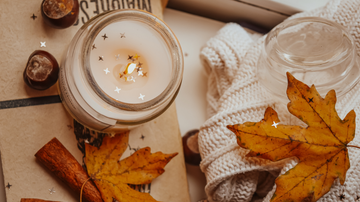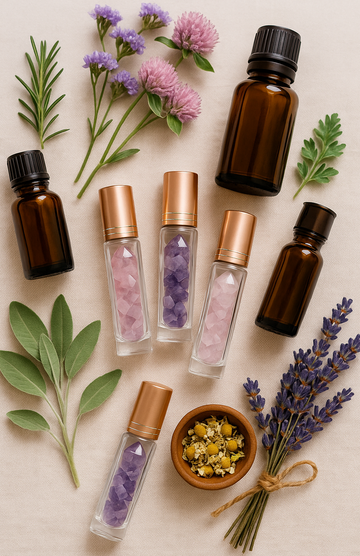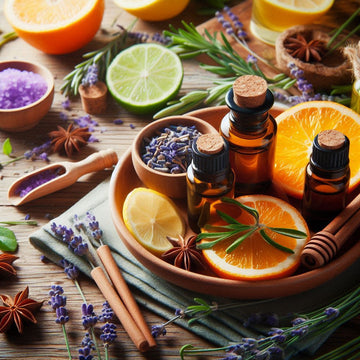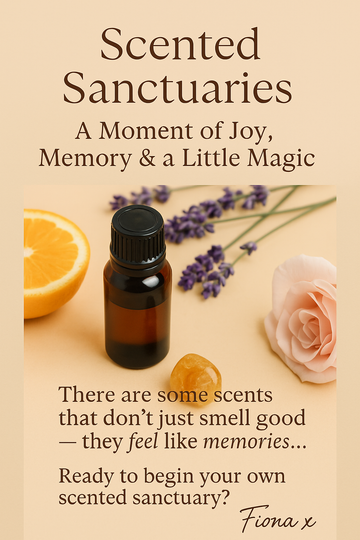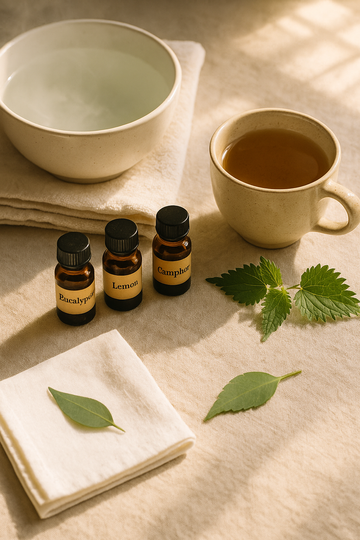Module 1: Introduction to Candle Making

Overview
Welcome to the first module of our candle-making course! In this section, you will learn about the art and benefits of candle making, what to expect in this course, and how it can enhance your creativity and relaxation.
What is Candle Making?
Candle making is the process of creating candles by combining wax, wicks, and fragrance to produce a light source, an aromatic experience, or simply a beautiful decorative piece. Whether you want to make candles for personal use, gifts, or to start a small business, this craft can be both fulfilling and fun.
Benefits of Candle Making
- Creativity: Candle making allows you to express your creativity by experimenting with different colours, shapes, and scents. You can design candles that reflect your personal style or the ambiance you wish to create.
- Relaxation: The process of making candles can be meditative. Many find joy in the repetitive tasks of measuring, pouring, and decorating, allowing for a therapeutic experience.
- Customization: Create unique gifts for friends and family by tailoring scents and colours to their preferences. Personalised candles make thoughtful presents for any occasion.
- Home Fragrance: Candles can enhance your home environment. By selecting your favourite fragrances, you can create a cosy atmosphere and mask unwanted odours.
- Sustainability: Making your own candles allows you to choose eco-friendly materials, such as soy or beeswax, and avoid the chemicals often found in commercially produced candles.
Course Expectations
Throughout this course, you will learn:
- The different types of waxes and wicks, and how to choose them for your projects.
- The essential tools and materials needed for candle making.
- Step-by-step instructions for making various types of candles.
- Tips for troubleshooting common candle-making problems.
- Creative techniques to elevate your candle-making skills.
Getting Started
Before we dive into the materials and processes, take a moment to consider why you want to learn candle making. Is it for relaxation, as a hobby, or perhaps to start a small business? Understanding your motivation will help you engage more deeply with the course.
Summary
In this module, you’ve been introduced to the basics of candle making, including its benefits and what to expect from this course. In the next module, we will delve into the materials you’ll need to get started.
Module 2: Materials Needed for Candle Making

Overview
In this module, we will explore the essential materials and tools required for candle making. Understanding these components is crucial for creating high-quality candles.
Types of Wax
- Paraffin Wax
- Description: A byproduct of petroleum, widely used due to its affordability and ease of use.
- Benefits: Good scent throw and colour retention.
- Considerations: Not eco-friendly and can emit soot.
- Soy Wax
- Description: Made from soybeans, it’s a popular choice for eco-conscious makers.
- Benefits: Burns longer and cleaner, biodegradable, and holds fragrance well.
- Considerations: Can be more expensive than paraffin.
- Beeswax
- Description: A natural wax produced by bees.
- Benefits: Non-toxic, has a natural honey scent, and burns the longest.
- Considerations: Typically more expensive and can be harder to work with.
- Coconut
- Description: A natural and renewable biodegradable wax produced from coconut oil
- Benefits: Considered a cleaner wax as when burning produces less soot, it is non toxic and eco-friendly. Main benefit to chandlers is the superior scent throw.
- Considerations: Higher expense, more suited to container candles than pillars.
- Palm Wax
- Description: Derived from palm oil, known for its unique crystalline structure.
- Benefits: Eco-friendly when sourced sustainably, produces beautiful patterns.
- Considerations: Requires careful sourcing to ensure sustainability.
Wicks
- Types of Wicks: Cotton, wood, and metal-core wicks.
- Choosing the Right Wick: The size and type of wick depend on the wax type and the diameter of the candle. A proper wick ensures an even burn and prevents soot.
Fragrance and Dye
- Fragrance Oils
- Description: Synthetic or natural oils designed for candle making.
- Usage: Typically added at 6-10% of the wax weight.
- Essential Oils
- Description: Natural extracts from plants.
- Usage: Used for their aroma and therapeutic benefits, but can be less potent in candles. Specialised training is always advised if choosing to use essential oils in candle making, due to the different flash points and percentages used. The chemistry of each oil will vary and therefore not all oils are compatible with some being unsuitable for use in candles although very popular as oils in aromatherapy.
- Dyes
- Types: Liquid, chip, or powder dyes.
- Usage: Follow manufacturer guidelines for amounts to achieve desired color.
Containers and Moulds
- Containers: Glass jars, metal tins, ceramic and concrete vessels.
- Moulds: Silicone moulds for pillar candles or specialty shapes.
Tools
- Double Boiler: For melting wax safely.
- Thermometer: To monitor wax temperature.
- Stirring Sticks: For mixing in fragrances and dyes.
- Wick Holder: To keep the wick centred while the wax cools.
- Pouring Pot: A spouted container for easy pouring.
Summary
In this module, we covered the essential materials and tools needed for candle making. Understanding these components will set you up for success in your candle-making journey.
Module 3: Safety Precautions

Overview
Candle making involves working with hot materials, so safety is paramount. In this module, we will discuss the necessary precautions to ensure a safe candle-making experience.
General Safety Tips
- Work in a Well-Ventilated Area: Ensure good airflow to avoid inhaling fumes from melted wax and fragrances.
- Wear Protective Gear:
- Gloves: Protect your hands from hot wax.
- Goggles: Protect your eyes from splashes.
- Keep a Fire Extinguisher Nearby: Always have a fire extinguisher or a bucket of baking soda in case of emergencies.
- Handle Hot Wax Carefully: Always use a double boiler to prevent direct heat and reduce the risk of burns.
Wax Handling
- Temperature Awareness: Use a thermometer to monitor the wax temperature, keeping it within the recommended range (typically 170-180°F).
- Avoid Overheating: Overheating wax can lead to smoking or ignition.
Working with Wicks and Fragrance
- Wick Safety: Ensure wicks are trimmed to avoid excessive soot or flame height.
- Fragrance Handling: Store fragrances away from heat sources and follow safety instructions on labels.
Cleanup and Storage
- Clean Spills Immediately: Use paper towels for wax spills; for stubborn spots, a warm cloth can help.
- Proper Storage: Keep materials in a cool, dry place away from direct sunlight.
Summary
In this module, we discussed essential safety precautions for candle making. By following these guidelines, you can ensure a safe and enjoyable experience.
Module 4: Basic Candle-Making Process

Overview
In this module, we’ll cover the step-by-step process of making a basic candle. This foundational knowledge will prepare you for creating various types of candles in future modules.
Step-by-Step Process
1. Gather Your Materials
- Wax (your choice)
- Wick
- Fragrance oil
- Dye (if desired)
- Container or mould
- Double boiler
- Thermometer
- Stirring stick
- Wick holder (if using containers)
- Heat resistance covering on all surfaces to prevent damage
2. Prepare the Wick
- Measure the wick length: It should be about 2 inches taller than the container.
- Secure the wick to the bottom of the container using a glue dot or adhesive.
3. Melt the Wax
- Fill the bottom pot of the double boiler with water and bring it to a simmer.
- Place the wax in the top pot and stir occasionally until fully melted (around 170-180°F/ 76-82 celsius).
4. Add Fragrance and Dye
- Once melted, remove from heat.
- Add fragrance oil (6-10% of wax weight this will vary depending on the fragrances being used. Always follow the suppliers recommendations) and dye (if using) and stir thoroughly.
5. Pour the Wax
- Let the wax cool slightly (around 160°F/70 celcius) before pouring.
- Slowly pour the wax into your prepared container, ensuring the wick remains centred.
6. Allow to Cool
- Let the candle cool completely at room temperature. Avoid moving it wh ile it sets.
7. Trim the Wick
- Once cooled, trim the wick to about ¼ inch/6.5cm above the wax surface.
Summary
You’ve now learned the basic process of candle making. With this foundation, you’ll be ready to explore more advanced techniques and styles in the upcoming modules.

